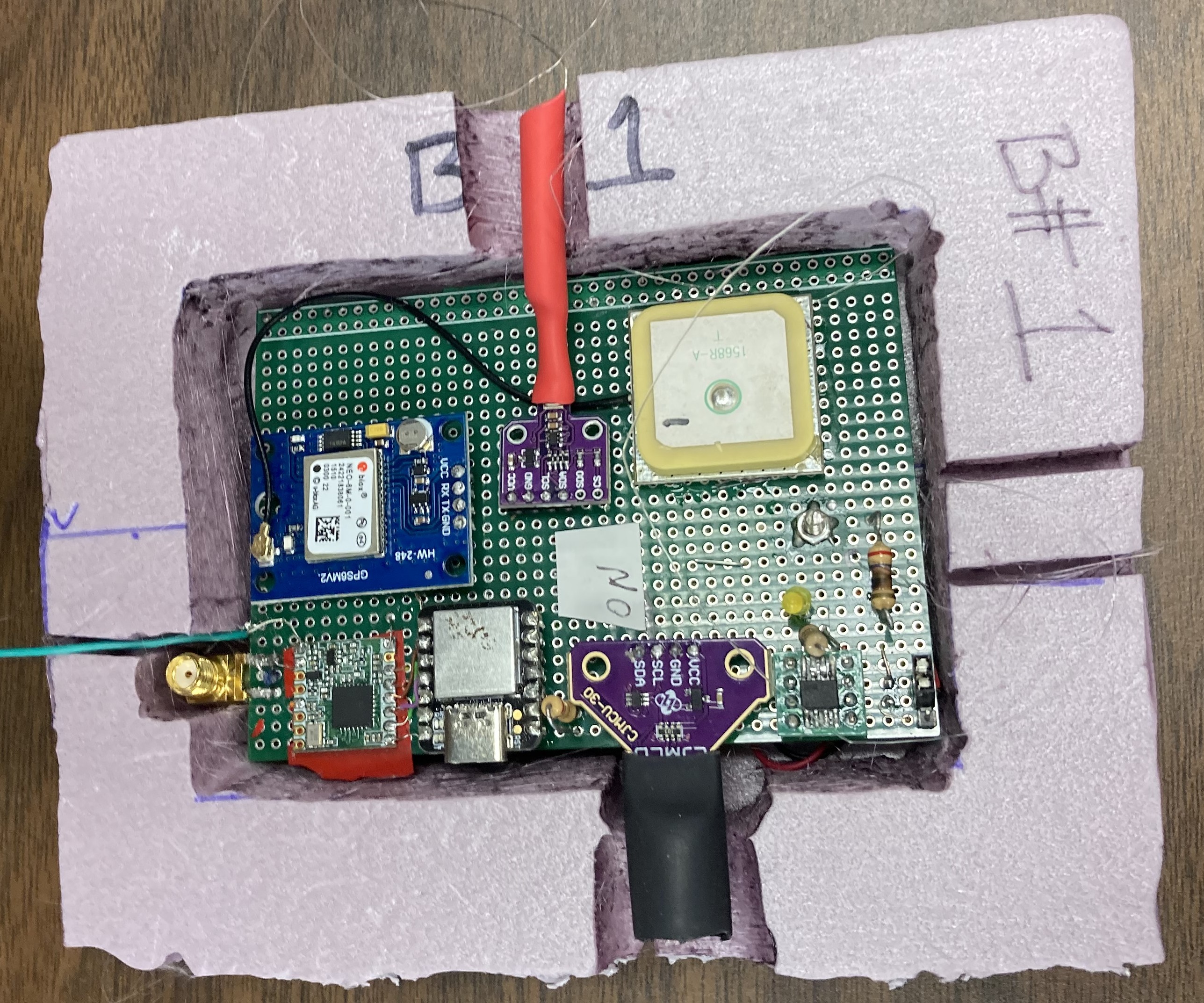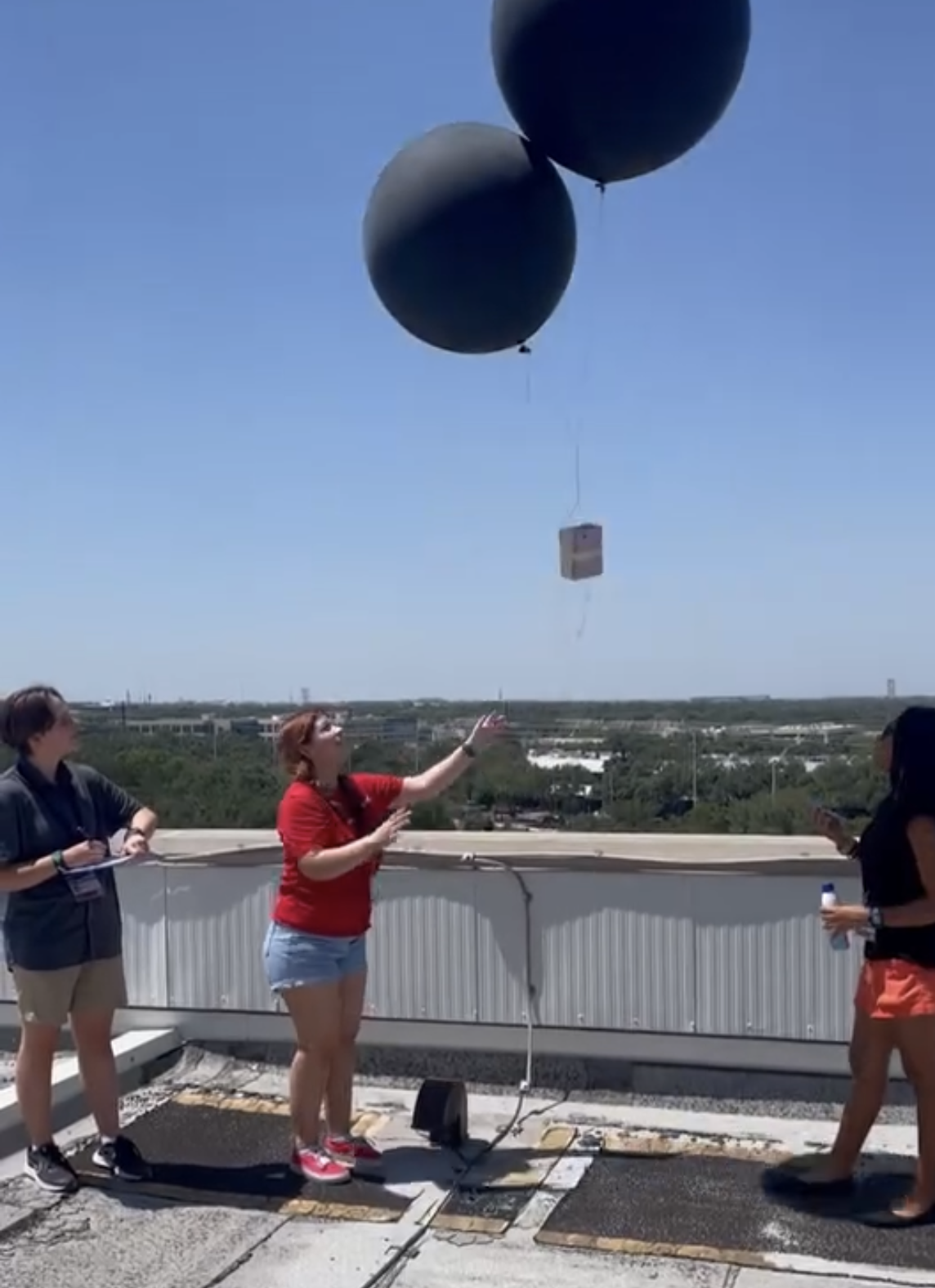
During my NASA Scientific Enhancement in Earth Sciences (SEES) Internship, I helped organize and deploy high-altitude balloons (HABs) to collect upper atmospheric data in Texas. The HAB system consisted of two large helium-inflated balloons attached to a foam-insulated payload that carried instruments including an altimeter, thermometer, pressure and humidity sensors, a CO2 sensor, and GPS. At a predetermined altitude, a remote release trigger separated the payload from the balloons for recovery.

I was a member of the launch team, which worked along the ground and chased teams during launch. Prior to launch, I performed helium lift calculations to ensure the payload achieved the proper positive lift. I also learned to solder payload electronics, enabling reliable data collection from the sensors and instruments.
On launch days, I worked alongside my team to inflate the balloons, assemble and secure the payload, confirm data transmission with the ground and chase teams, and coordinate the release from a rooftop launch site. I was responsible for recording accurate environmental data, such as temperature and wind, and maintaining operational data logs that documented the timing and completion of each step in the launch checklist. Additionally, I organized the inventory and on-site logistics to ensure the efficient and reliable distribution of launch hardware.

Over the course of three successful launches, our team collected valuable atmospheric data and developed standardized launch procedures, which we later demonstrated to another research group that was preparing for HAB eclipse studies.
After the launches, we synthesized and analyzed the collected data, correlating atmospheric measurements with wind patterns and tracking environmental changes across different altitudes. Our team prepared a technical video presentation, which we presented to other research teams, NASA scientists, and science and engineering educators.
Additionally, we prepared an abstract summarizing our research and constructed a poster that was published and presented at the 2023 American Geophysical Union (AGU) Conference. This allowed us to share our findings and provide a model for HAB launch procedure that other researchers and educators could use for future research and educational initiatives.